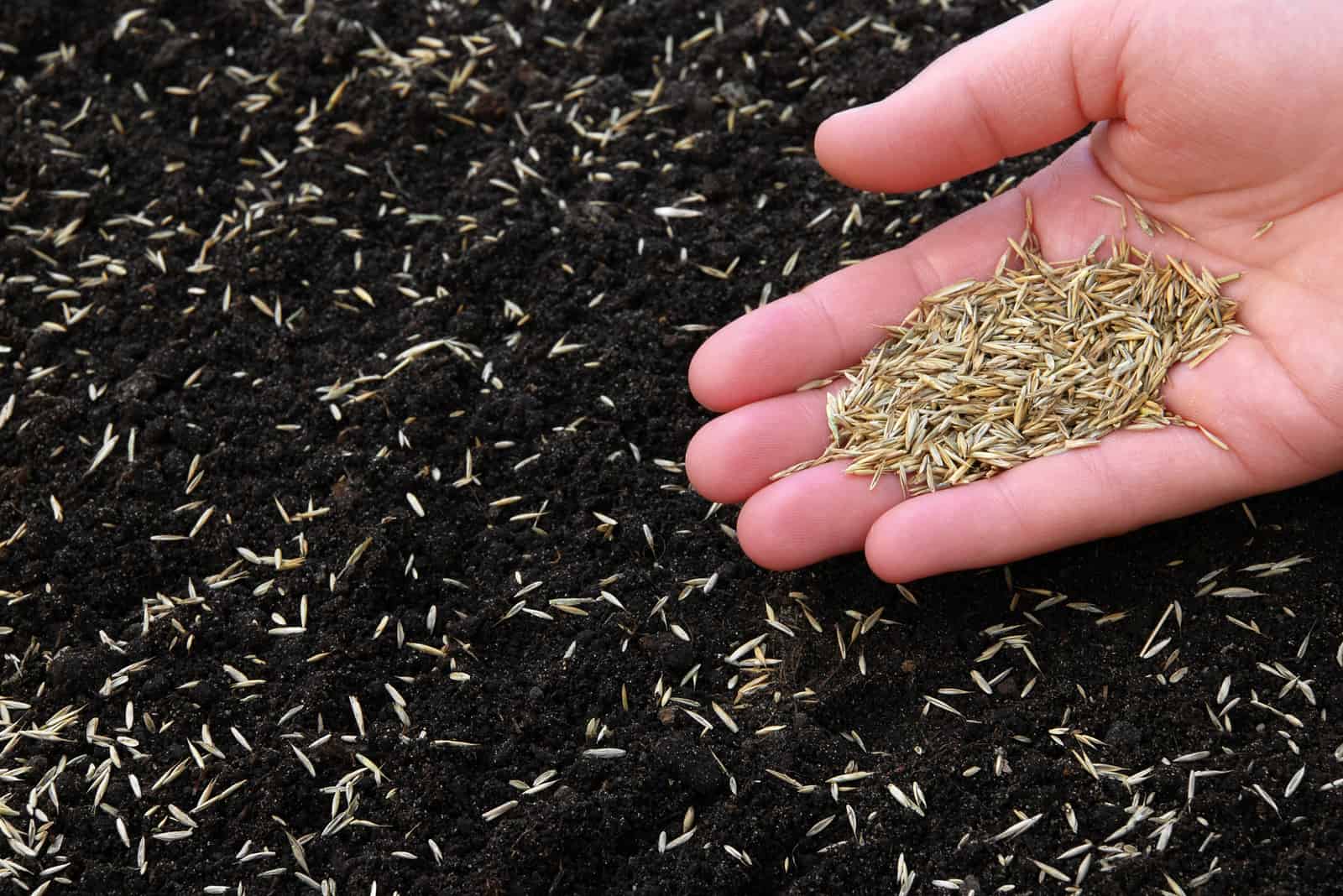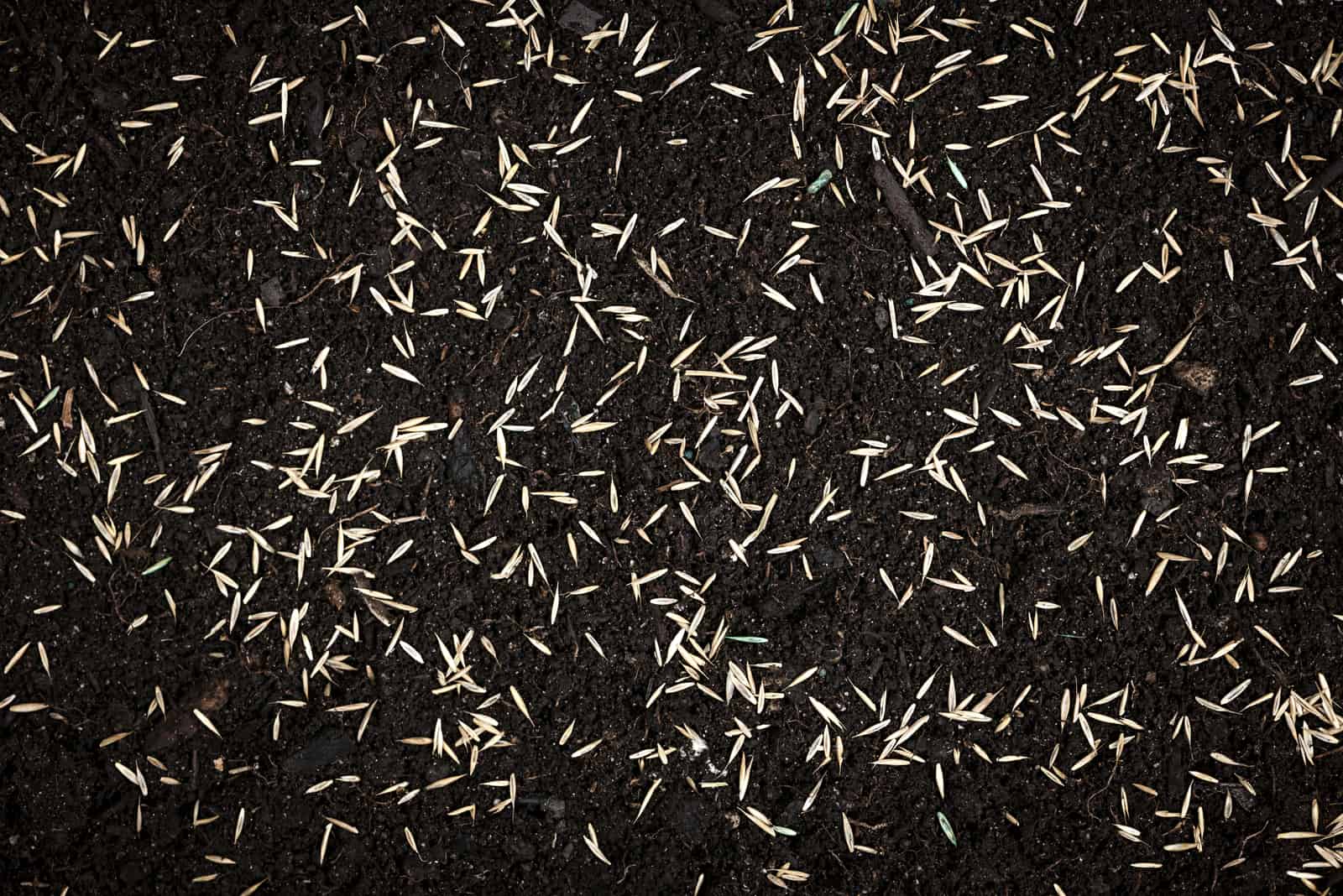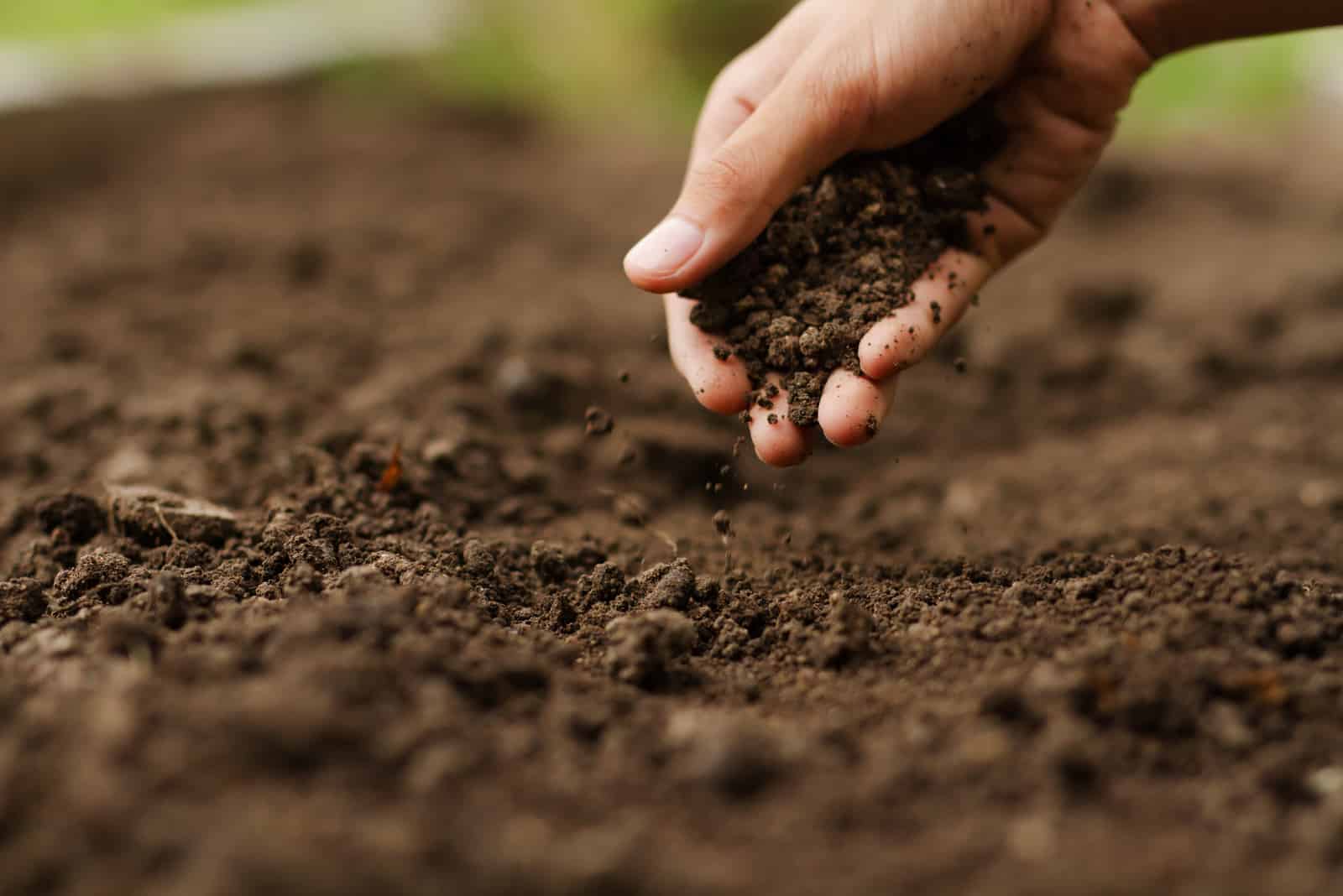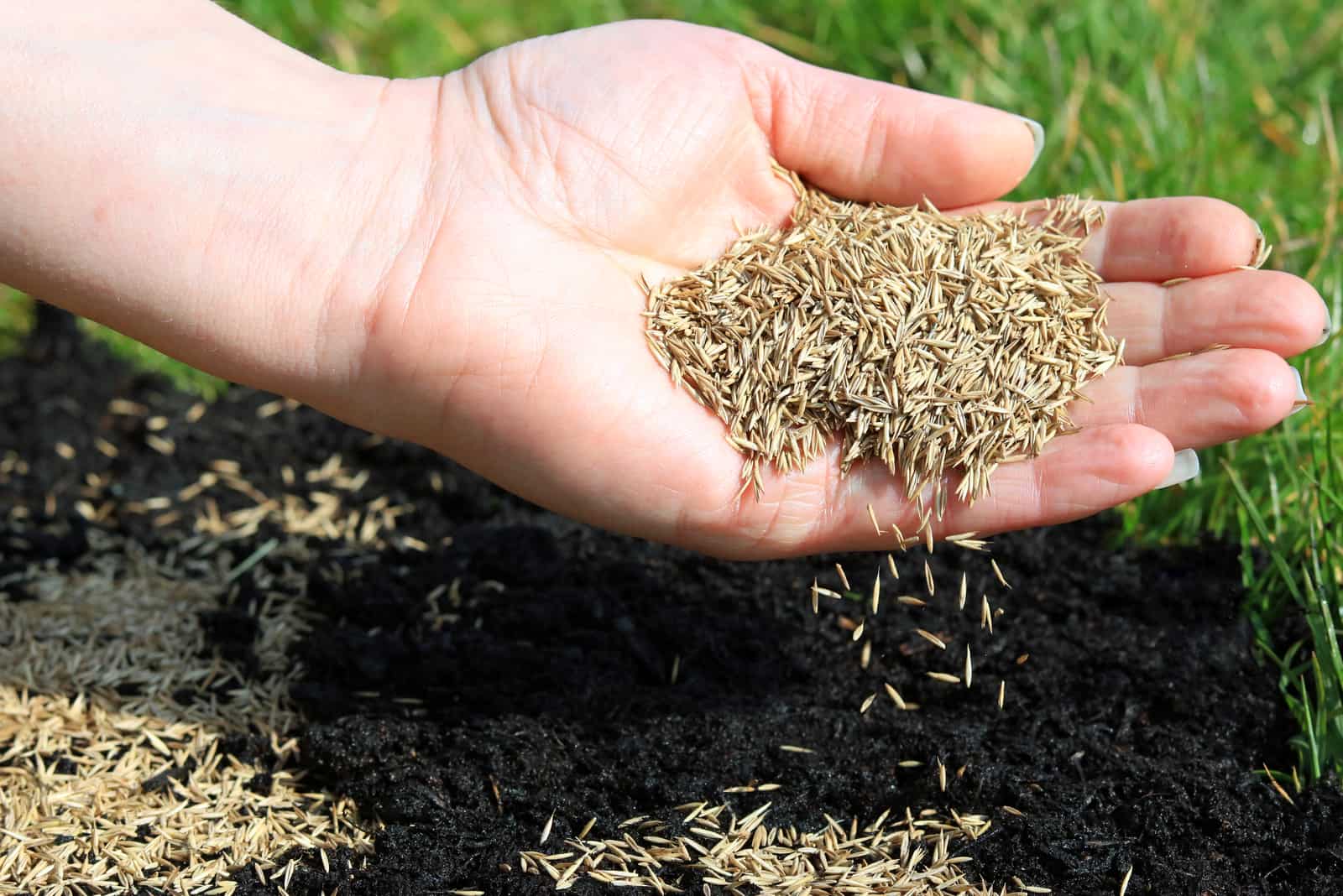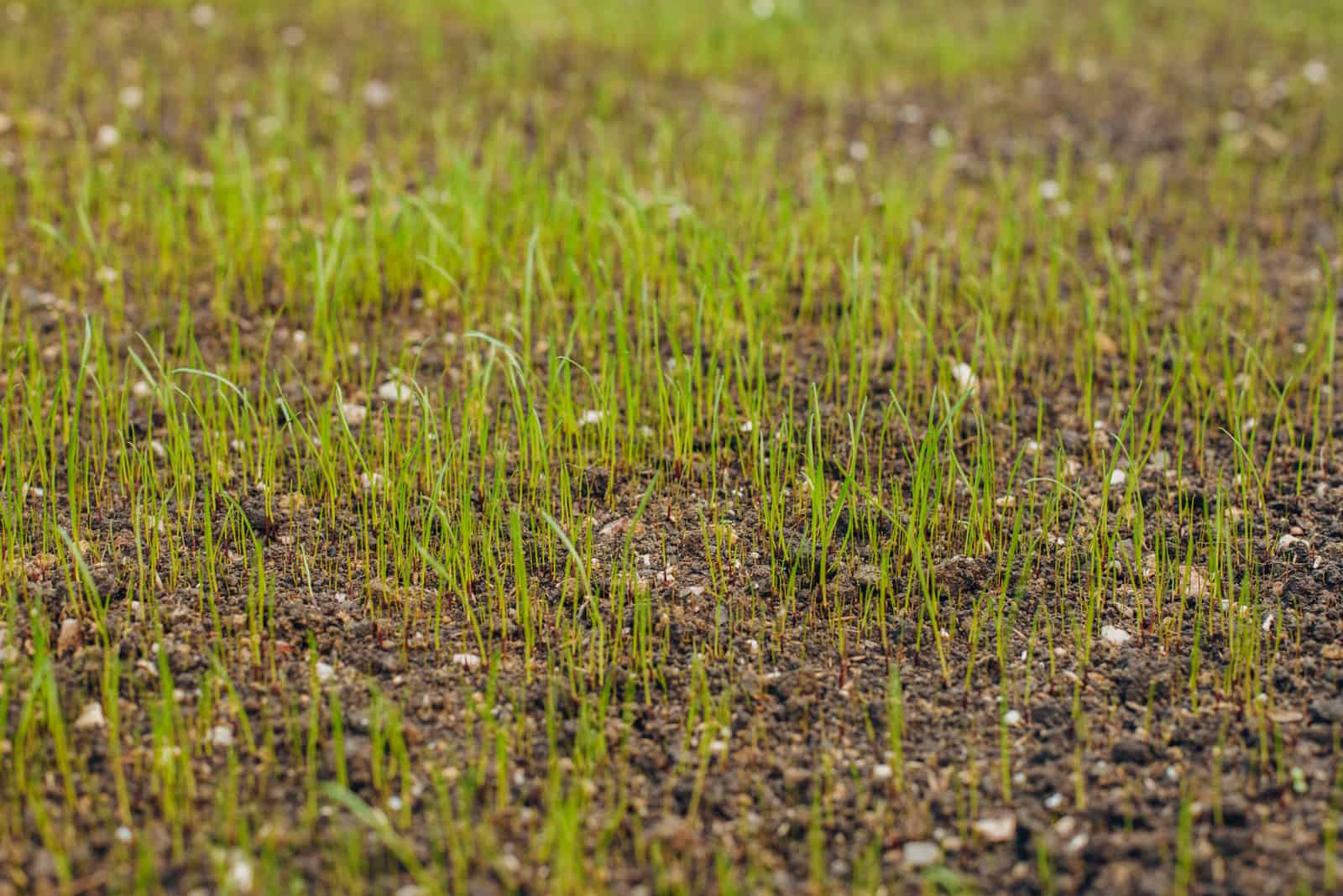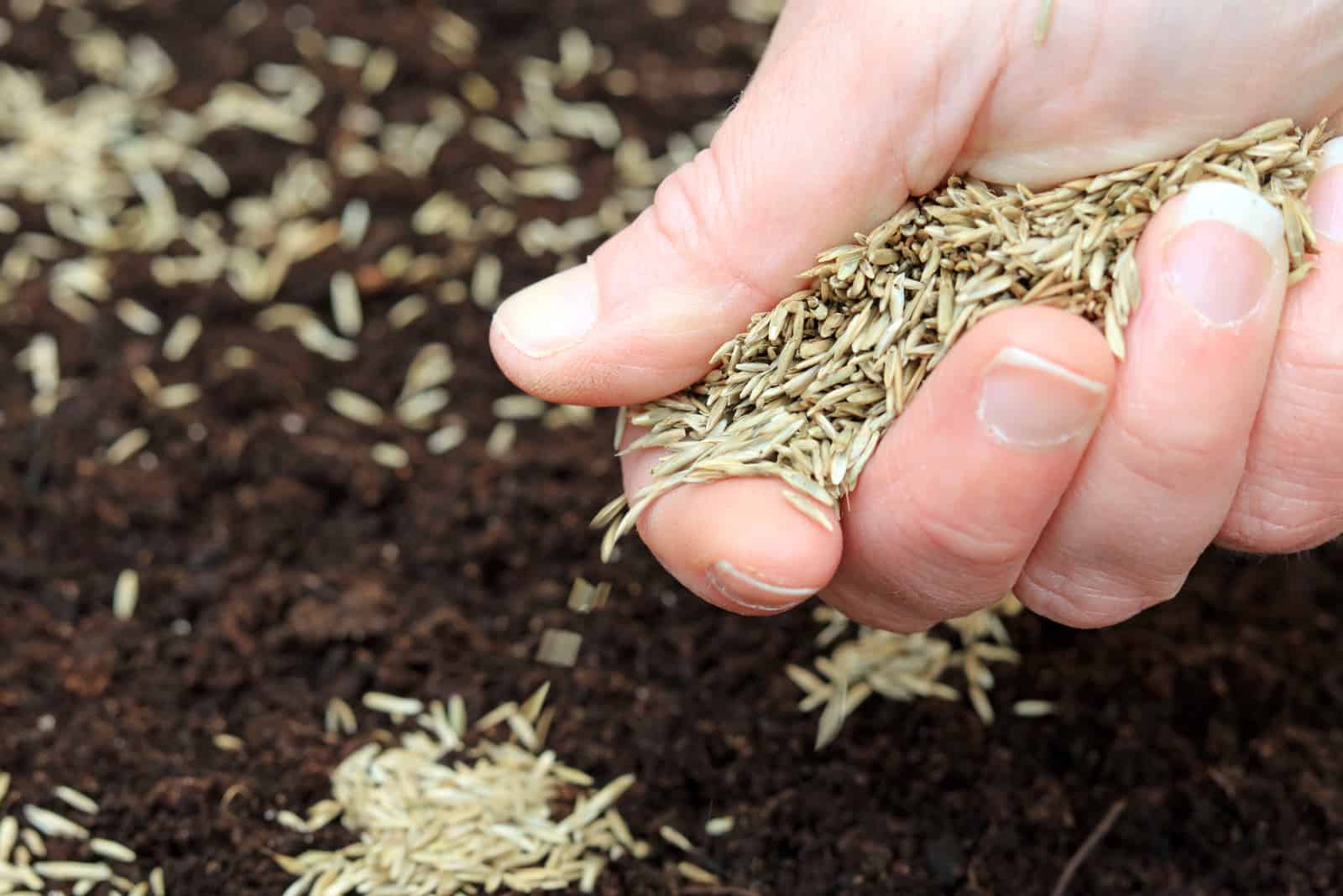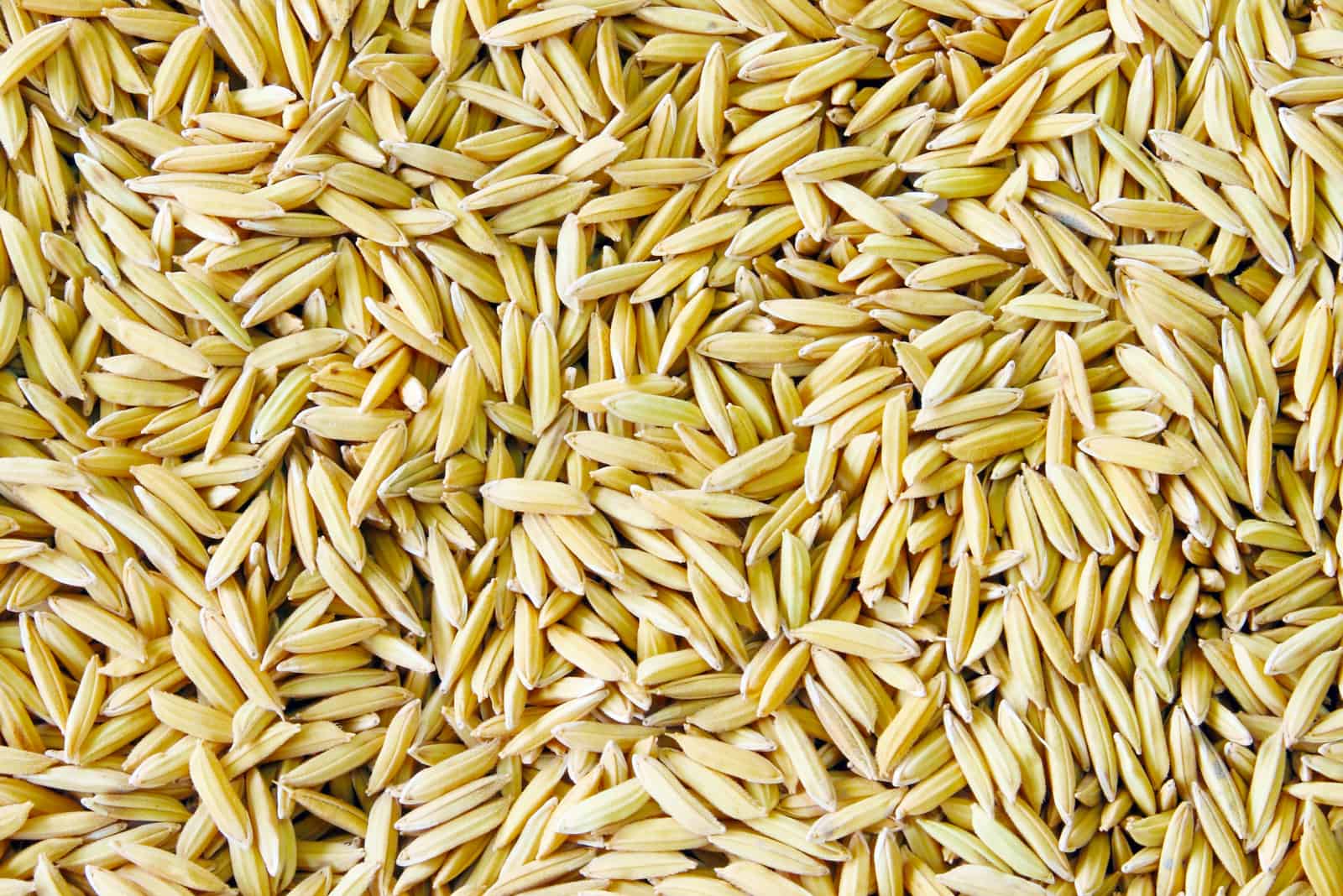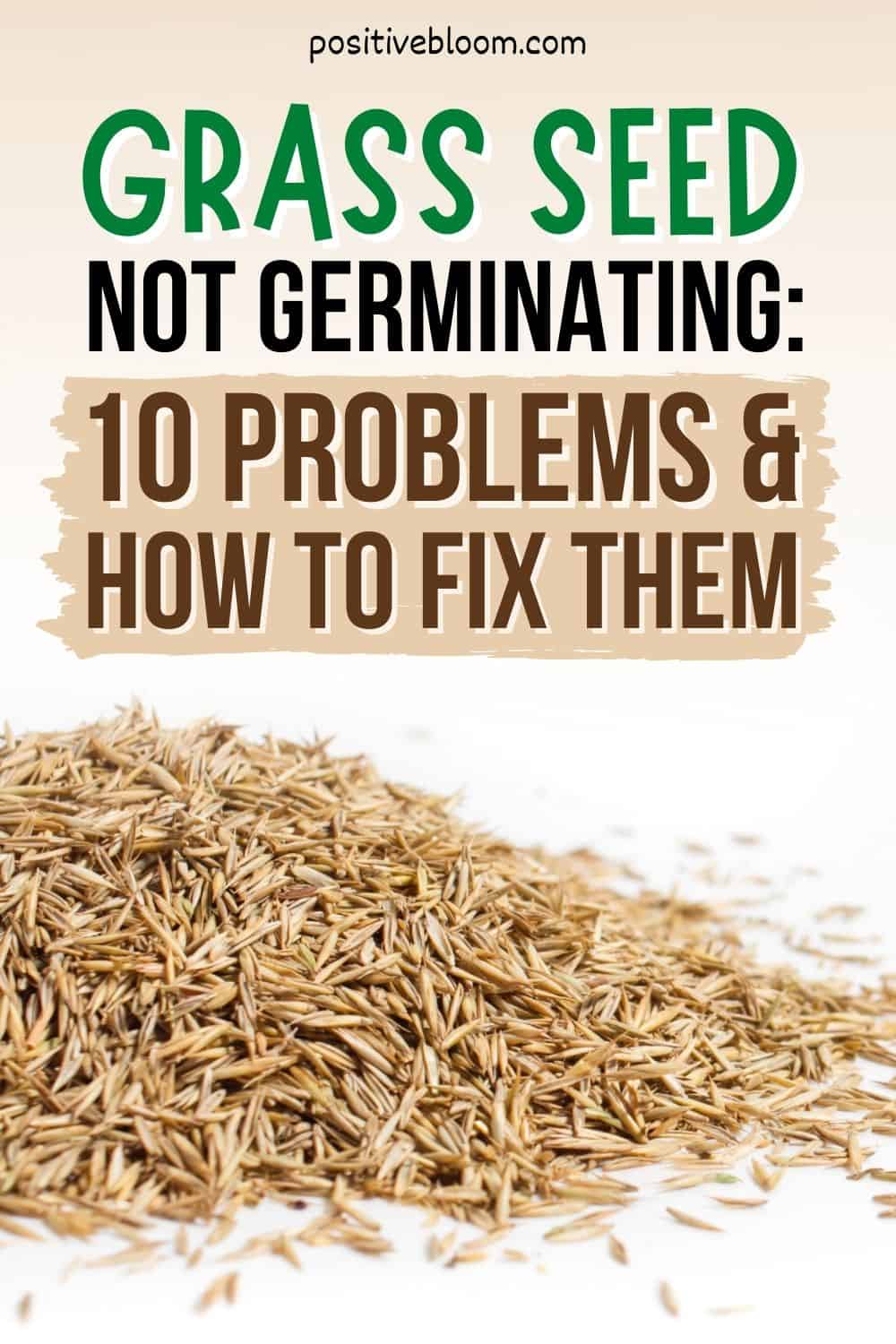Picture the scene. You are planning on growing a new lawn and you have prepared everything: from high-quality grass seed, to testing and choosing the most suitable soil as well as watering and taking constant care of your seedlings… yet, nothing is growing.
How is this possible?
Don’t blame yourself or the new grass seeds as the issue might be something else entirely.
If you want to know the common reasons for a grass seed not germinating, and also learn how to fix them, this is the article for you!
Grass Seed Not Germinating: Common Problems And How to Fix Them
Seeds need to start growing, or rather to germinate.
For the germination process to be successful, you have to pay attention to oxygen, moisture, proper temperature, and light.
Be aware that grass seed germination also depends on the grass type. Check out the table below to see the approximate times required for germination to occur.
[table id=37 /]Though Ryegrass and Fescues have quite a different germination time, they are extremely similar to one another.
Now that you know the approximate germination time for the most common grass types, let’s dive into the problems that might interfere with grass seed germination!
1. Not enough light
Grass seedlings need to get at least 4 hours of direct sunlight in order to germinate and grow.
Sunlight is like food for plants.
So, if you have planted your seedlings in a shaded part of your garden, or have buried them too deep and they cannot get any light, they might not start growing.
Bear in mind that you shouldn’t just spread the seeds on the surface of your soil because birds might come and eat them, and you don’t want your expensive seeds to end up as bird food!
How to fix:
You should choose a sunny part of your garden to plant your new grass seed mixtures, and you should rake them into the topsoil after sowing them: about 1 cm in depth. This way they will both get enough sunlight and avoid getting eaten by birds.
2. Wrong temperature
Soil temperature has a great impact on a grass seed not germinating, as different grass types require different soil temperature for growth.
For instance, cool-season grasses will sprout and flourish if planted during fall or early spring as they cannot stand high soil temperatures.
Many homeowners think that spring is the perfect time for planting grass seed because the weather is warm and nice. However, the soil needs time to warm up first!
You don’t want your expensive grass seed to freeze in cold soil, as you will end up with bare spots or no grass growth whatsoever.
How to fix:
When the temperature is 50 degrees Fahrenheit, you should wait about 10 days. That should be enough time for the soil to reach the same temperature, making it warm and cozy for your new seedlings.
I would suggest you plant the grass in early fall, mainly because the soil is still the perfect temperature for germination. During winter, it will be focusing on the development of a sturdy root structure.
3. Soil problems
Wrong soil type, inadequate soil pH, soil too compact, not enough aeration… These are some problems that might lead to your grass seed not germinating.
Your soil can be either alkaline or acidic, it depends on the pH level.
Almost all types of grasses prefer having a pH somewhere in the middle, from 5.5 to 7. Lower levels indicate acidic soil, while a pH higher than 7 means alkaline.
If your grass is struggling to grow, then the pH might be the reason why.
When planting grass seeds for the first time, your soil might be hard and compact due to foot traffic, which can prevent air circulation and water absorption.
In addition, many stones, debris, and roots can interfere with the germination process and lead to poor results.
How to fix:
Test the soil before planting any grass species! You can buy a soil pH test kit at your local hardware store or send a sample of your soil for analysis.
You should definitely prepare the soil before planting to avoid having hard and compact soil. Get rid of any debris and roots, and thoroughly rake your soil – or, if you don’t want to spend time and energy, you can always rent a machine specialized for the job!
4. Water issues
Water issues are one of the most important things when it comes to lawn care and grass growth.
The grass seedlings might need a bit more water compared to growing grass. The top inch of soil should be moist all the time.
Too much water can basically drown your new seedlings, making them float in the soil mixture instead of growing the sturdy roots necessary for growth. This is why we avoid planting them early in spring; because it is raining a lot.
Too little water can dry out your germinating grass seed, which can prevent them from germinating and growing at all.
How to fix:
Your grass seeds will grow best in moist soil; not too wet or too dry. You need to find a balance to make the perfect soil for your new seedlings.
The best thing would be to water them everyday for 10 minutes. It’s even better if you have sprinklers, so you won’t have to walk on your growing grass.
5. Wrong grass seeds
You should always take the climate in your region into consideration.
You may accidentally plant warm-season grass seeds when you live in a region with a colder climate, and warm-season grass seeds cannot stand cold! (I guess me and warm-season grasses have something in common!)
You may have wanted to save money and bought a cheap bag of grass seeds that is expired or full of fillers and weed seeds. Incorrect storage can really affect the germination rate of grass seeds.
If you want your new lawn to be in the shady area of your garden, then buy the grass type according to its light requirements.
For everyone living in Florida, here are 7 types of grass suitable for the Florida climate !
Invest in high-quality grass seeds to have the best looking lawn in the neighborhood!
6. Weed treatments
Weeds can be really annoying, and we often use different treatments and herbicides for weed control.
For precautions, many homeowners apply pre-emergent weed killers before planting. Weed killers work by preventing the germination of weed seeds, and if you apply them right after planting your grass seed, they might have the same effect on them as well.
You can accidentally stop the growth of your new grass without even knowing it!
How to fix:
Don’t apply any weed killer products on your new lawn earlier than 10 weeks before planting the new grass seedlings to make sure that nothing stands in the way of your new lawn!
7. Inadequate amount of seeds
No one likes being in small and crowded places, and the same goes for seeds.
Overseeding is a common issue when it comes to planting, because people often think that the grass will grow better if there are more seeds. However, this is not the case.
Seeds also like to have their own space so they can grow their roots. If there are too many seeds, they are going to compete with each other for nutrients and space.
On the contrary, if you plant too few seeds in a given area, your grass might grow scarce and weeds will be able to fully grow and take over the empty space.
How to fix:
Carefully measure the area of your new lawn, or if you are planning to plant a new grass type on an existing lawn, make sure to measure it and follow the instructions provided. Use a spreader to spread the seeds evenly for the most optimal growth.
8. Fertilizers
Sometimes your soil won’t be rich enough in nutrients to support the growth and sprout of your new grass seeds.
In order to boost seed germination, you should use an appropriate lawn fertilizer that will supply your seedlings with all the nutrients they need in order to grow big and strong.
Check out what is the best fertilizer for a new sod right here!
However, applying too much fertilizer and other soil amendments can lead to chemical build up in soil, which often disrupts growth.
How to fix:
You should apply starter fertilizer before planting to make the soil more cozy for your new seedling, as well as to aid germination and growth by providing the necessary nutrients via fertilization.
We recommend you use a slow-release fertilizer that contains phosphorus, which is a key component in supporting the development of your new grass seedlings.
Don’t worry if you forgot to fertilize the soil before planting, as you can also do it right after the seeds have been planted. It will have the same effect.
9. Mowing too early
Mowing the grass seeds before they have been fully developed is a common mistake made by homeowners.
They are often impatient and can’t wait to have a freshly cut lawn!
However, mowing too early should be avoided because the mower can rip the new seedling right out of the soil, especially if the grass is wet. They are also heavy, and young grass cannot withstand vehicle traffic.
How to fix:
Wait for the grass to grow one third higher than the desired mowing height before mowing (e.g. if normal mowing height is 3 inches, you mow the grass when it reaches 4 inches).
Carefully observe the height and mow regularly.
10. Foot traffic
Grass seeds cannot withstand being walked all over, let alone being used for driveways!
Even though you can’t see them because they are buried in the soil, trust me, they can be affected by a lot of things.
When it comes to foot and vehicle traffic, this kind of pressure can stunt grass seed germination, which leads to poor growth results.
How to fix:
Mow your lawn at least 3 times before using it for walking. This way you will ensure that your new grass is strong enough to bear foot and vehicle traffic.
Tips For Planting Grass Seed
Now that we have covered the most common problems and how to fix them, let’s look at some additional things we can do to ensure that grass seeds are germinating and growing as well as possible.
• Always be aware of the climate in your region, and plant the appropriate type of grass seed.
• Invest in high-quality grass seeds , and don’t use the ones that have been stored improperly because some seeds can go bad.
• You should test the soil before planting the seeds to check the pH level, because grass seedling prefers neutral to slightly acidic soil.
• Prepare the soil before planting and fertilize it to provide enough nutrients for the grass seeds.
• Do not sow them too deep into the soil, as this can prevent the seeds from getting enough light and air for germination and growth.
• You can cover the new seeded area with mulch to lock the seeds in one place and reduce evaporation.
• Don’t use any herbicides or weed killers prior to planting or if you have already planted the seeds as it can stunt germination.
• Buy sprinklers. The grass will love it and, although you have to spend some money, you will definitely save time and energy.
• Do not mow your new lawn too early and don’t walk or drive on it! This may rip out the young grass and completely destroy your lawn.
You can also check this video and see additional tips and tricks on how to make grass seeds germinate:
Conclusion
As you can see, there are many mistakes that can lead to grass seed not germinating, however they can be easily avoided!
Even if you don’t make it the first time – don’t worry!
Everybody makes mistakes, and sometimes it isn’t even up to you because many things can affect grass seed germination, like grass type, soil temperature, climate, foot traffic etc.
Just make sure you get the right grass seeds, test and prepare soil before planting, avoid applying any weed treatment products, and carefully water the seedlings, and everything will be fine!
Just follow the instructions and don’t give up!
You got this!
Until next time.
Like this post? Share or pin it for later!

